Events
Events Calendar
Misel Colloquium: Carlos Frenk
Thursday, Sept. 22, 2022, 3:35 p.m. through Thursday, Sept. 22, 2022, 4:35 p.m.
B50 Tate Hall
The “Lambda cold dark matter'' (LCDM) cosmological model is one of the great achievements in Physics of the past thirty years. Theoretical predictions formulated in the 1980s turned out to agree remarkably well with measurements, performed decades later, of the galaxy distribution and the temperature structure of the cosmic microwave background radiation. Yet, these successes do not inform us directly about the nature of the dark matter. This manifests itself most clearly on subgalactic scales, including the dwarf satellite galaxies of the Milky Way and especially less massive dark matter halos, too small to have made a galaxy. Apparent contradictions between the predictions from cosmological simulations and observations have led to the perception of a “small-scale crisis” for LCDM. I will argue that this perception stems from an inappropriate application of the simulations and that, in fact, the theory is entirely consistent with available data. I will contrast the predictions of LCDM with those of the interesting alternative of warm dark matter and show how forthcoming gravitational lensing and gamma-ray data can conclusively distinguish between the two.
2022 Misel Family Lecture: Carlos Frenk
Wednesday, Sept. 21, 2022, 7 p.m. through Wednesday, Sept. 21, 2022, 8 p.m.
McNamara Alumni Center, Memorial Hall
Research: Professor Frenk is Director of the Institute for Computational Cosmology and the Ogden Professor in the Department of Physics at Durham University. His research is focused on extragalactic astronomy and cosmology, fluid dynamics, mathematical modeling, and supercomputer simulations.
The William I. Fine Theoretical Physics Institute is proud to host the 15th Annual Misel Family Lecture. This lecture is FREE AND OPEN TO THE PUBLIC. Questions? Please contact us at ftpi@umn.edu or 612-625-6055. We look forward to seeing you there!
Abstract: This lecture is about a future technology, quantum computing, which uses known laws of quantum physics to compute in new ways. Within this technology challenge are at least two profound questions in basic science: which problems can be sped up with a quantum computer, and how can inadvertent measurement be avoided. After a few introductory comments about the first question, this lecture will concern mostly the second question, and will explore some options and the challenges of each.
Read more about Professor Frenk on his Durham University profile and Wikipedia page.
Registration for the lecture is encouraged but not required
Public Telescope Viewing
Friday, Sept. 16, 2022, 8 p.m.
Tate Hall
Presentation: Room B20
Viewing: Room 510
Presenter: Chris Guo
Topic: Solar Flares
Join us on Friday night for rooftop observing through our historic telescope in the dome of Tate Hall. There will be a presentation followed by outdoor observing (weather-permitting). You will have the chance to observe some of the same celestial objects that have inspired sky-gazers throughout history!
Colloquium: Clifford Cheung, Caltech
Thursday, Sept. 15, 2022, 3:35 p.m. through Thursday, Sept. 15, 2022, 4:35 p.m.
B50 Tate Hall
Scattering amplitudes are fundamental observables encoding the dynamics of interacting particles. In this talk I describe how to systematically construct these objects without reference to a Lagrangian. The physics of real-world particles like gravitons, gluons, and pions are thus derived from the properties of amplitudes rather than vice versa. Remarkably, the expressions gleaned from this line of attack are marvelously simple, revealing new structures long hidden in plain sight. In particular, I describe how gravity serves as the "mother of all theories" whose amplitudes secretly unify, among others, all gluon and pion amplitudes. This fact has far-reaching theoretical and phenomenological connections, e.g. to fluid mechanics and to new approaches to the black hole binary inspiral problem.
Colloquium: Senthil Todadri, MIT
Thursday, Sept. 8, 2022, 3:35 p.m. through Thursday, Sept. 8, 2022, 4:35 p.m.
B50 Tate Hall
Abstract: Electrons in a conventional metal are described by Landau's celebrated theory of Fermi liquids. In the last few decades, a growing number of metals have been discovered that defy a description in terms of Fermi liquid theory. Prominently, such `strange metals' appear as parent phases out of which phenomena such as high temperature superconductivity develop. However, their theoretical understanding has mostly remained mysterious. In this talk, I will discuss, in great generality, some properties of `strange metals' in an ideal clean system. I will discuss general constraints on the emergent low energy symmetries of any such strange metal. I will show how these model-independent considerations lead to concrete experimental predictions about a class of strange metals. Time permitting, I will discuss the utility of a focus on the emergent symmetries to reliably extract some physical properties of certain models of strange metals.
Physics Force at the State Fair
Thursday, Aug. 25, 2022, 10:15 a.m. through Thursday, Aug. 25, 2022, 3:15 p.m.
Dan Patch Park and Stage, Minnesota State Fairgrounds
The Physics Force will perform two public shows at the Dan Patch Park and Stage during STEM DAY at the State Fair. The shows are at 10:15 a.m. and 2:15 p.m. The shows last roughly one hour and are appropriate for all ages.
Universe in the Park: Gooseberry Falls State Park
Saturday, Aug. 13, 2022, 8:45 p.m. through Saturday, Aug. 13, 2022, 11 p.m.
Gooseberry Falls State Park
Universe in the Park is hosted by the Minnesota Institute for Astrophysics and area state and local parks.
Representatives of the Institute will present a short (~20 min) outdoor public talk and slide show. Presentations cover a variety of astronomical topics such as: the history of matter, how astronomers "see," and a journey through our solar system. For the 2022 season, talks will be outdoors to ensure they are as safe as possible.
Afterwards, if weather allows, attendees have the opportunity to view the sky through multiple 8-inch reflecting telescopes, operated by the staff and provided by the Minnesota Institute for Astrophysics. Additionally, free star maps (e.g., www.skymaps.com) and instructions are provided. Throughout the evening, audience members are encouraged to ask questions and discuss topics ranging from backyard astronomy to the latest scientific discoveries.
Although a vehicle permit is usually required to enter the parks, the events are free to the public. More about Gooseberry Falls State Park, here.
Universe in the Park: Tettegouche State Park
Friday, Aug. 12, 2022, 8:45 p.m. through Friday, Aug. 12, 2022, 11 p.m.
Tettegouche State Park
Universe in the Park is hosted by the Minnesota Institute for Astrophysics and area state and local parks.
Representatives of the Institute will present a short (~20 min) outdoor public talk and slide show. Presentations cover a variety of astronomical topics such as: the history of matter, how astronomers "see," and a journey through our solar system. For the 2022 season, talks will be outdoors to ensure they are as safe as possible.
Afterwards, if weather allows, attendees have the opportunity to view the sky through multiple 8-inch reflecting telescopes, operated by the staff and provided by the Minnesota Institute for Astrophysics. Additionally, free star maps (e.g., www.skymaps.com) and instructions are provided. Throughout the evening, audience members are encouraged to ask questions and discuss topics ranging from backyard astronomy to the latest scientific discoveries.
Although a vehicle permit is usually required to enter the parks, the events are free to the public. More about Tettegouche State Park, here.
Universe in the Park: William O'Brien State Park
Friday, Aug. 5, 2022, 8:45 p.m. through Friday, Aug. 5, 2022, 11 p.m.
William O'Brien State Park
Universe in the Park is hosted by the Minnesota Institute for Astrophysics and area state and local parks.
Representatives of the Institute will present a short (~20 min) outdoor public talk and slide show. Presentations cover a variety of astronomical topics such as: the history of matter, how astronomers "see," and a journey through our solar system. For the 2022 season, talks will be outdoors to ensure they are as safe as possible.
Afterwards, if weather allows, attendees have the opportunity to view the sky through multiple 8-inch reflecting telescopes, operated by the staff and provided by the Minnesota Institute for Astrophysics. Additionally, free star maps (e.g., www.skymaps.com) and instructions are provided. Throughout the evening, audience members are encouraged to ask questions and discuss topics ranging from backyard astronomy to the latest scientific discoveries.
Although a vehicle permit is usually required to enter the parks, the events are free to the public. More about William O'Brien State Park, here.
Universe in the Park: Eastman Nature Center
Saturday, July 30, 2022, 8:45 p.m. through Saturday, July 30, 2022, 11 p.m.
Eastman Nature Center
Universe in the Park is hosted by the Minnesota Institute for Astrophysics and area state and local parks.
Representatives of the Institute will present a short (~20 min) outdoor public talk and slide show. Presentations cover a variety of astronomical topics such as: the history of matter, how astronomers "see," and a journey through our solar system. For the 2022 season, talks will be outdoors to ensure they are as safe as possible.
Afterwards, if weather allows, attendees have the opportunity to view the sky through multiple 8-inch reflecting telescopes, operated by the staff and provided by the Minnesota Institute for Astrophysics. Additionally, free star maps (e.g., www.skymaps.com) and instructions are provided. Throughout the evening, audience members are encouraged to ask questions and discuss topics ranging from backyard astronomy to the latest scientific discoveries.
Although a vehicle permit is usually required to enter the parks, the events are free to the public. More about Eastman Nature Center, here.
School News
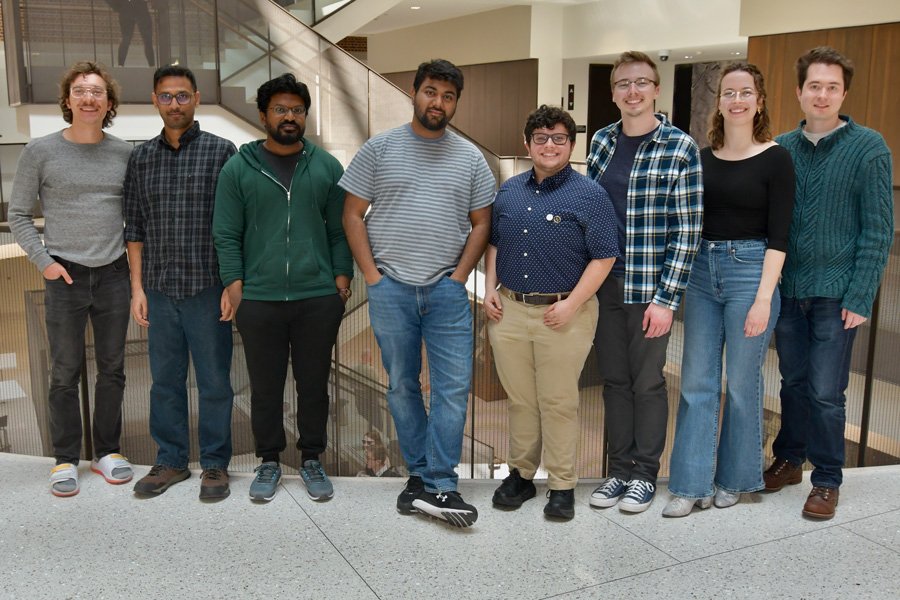
2024 Graduate Awards and Fellowships
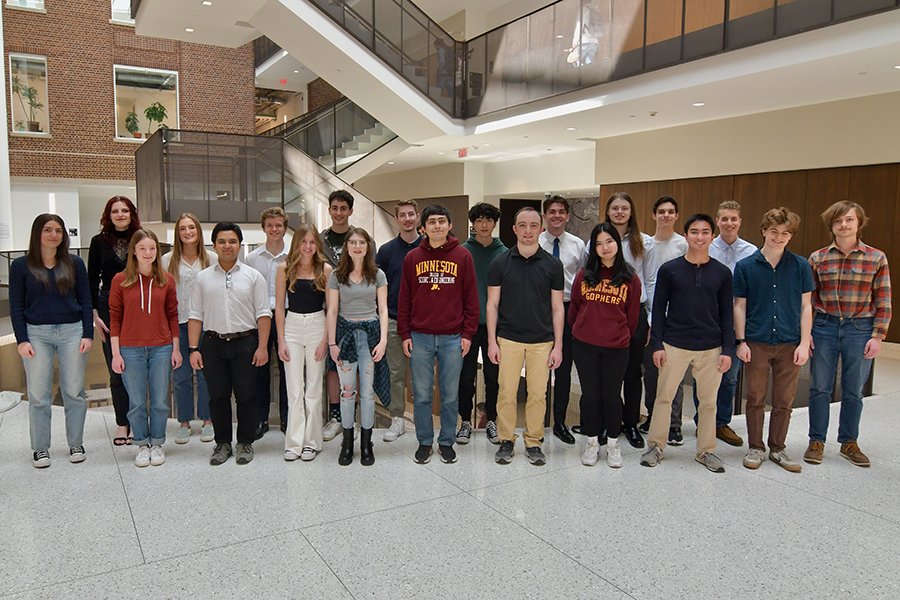
2024 Undergraduate Scholarship Recipients
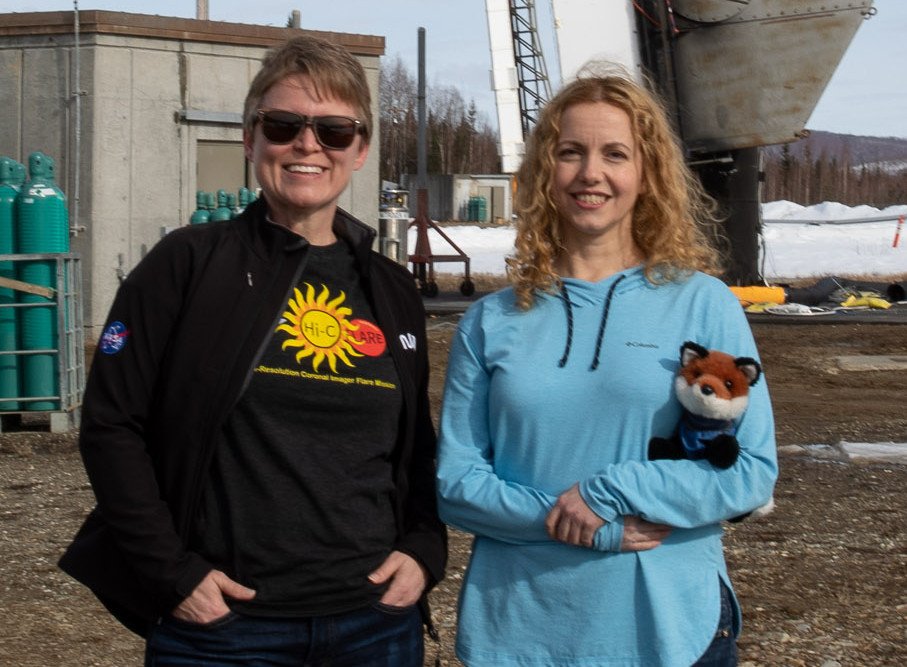
Glesener part of NASA's first solar flare observation campaign
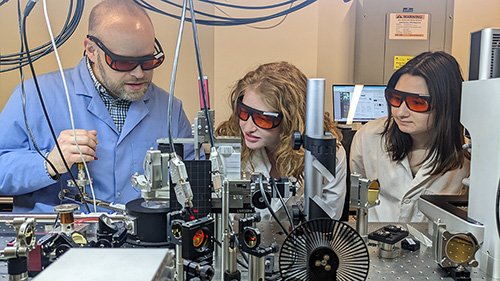
Inside Professor McLeod’s Nano-Imaging Laboratory
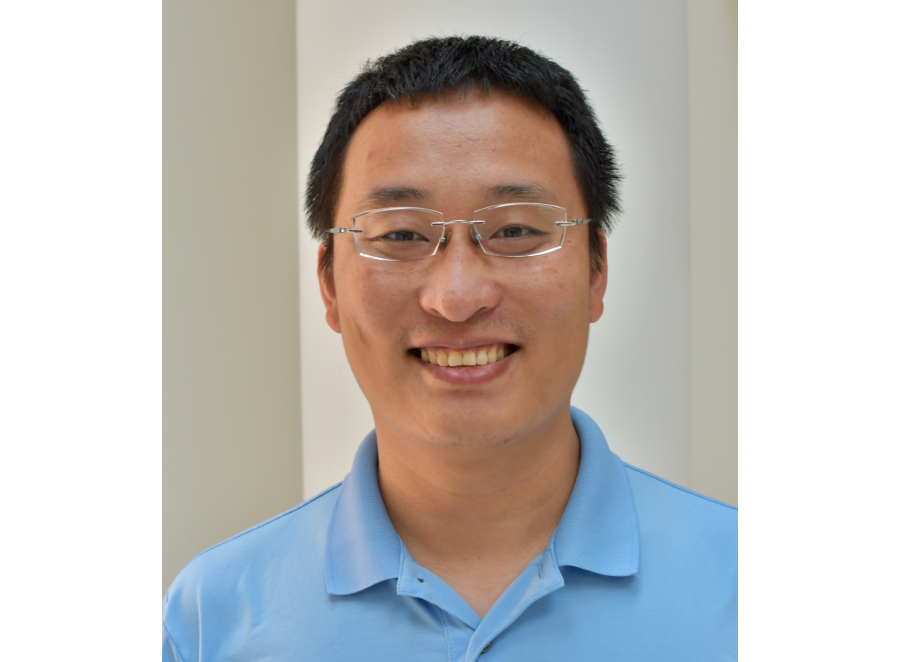
Liu receives prestigious Sloan Research Fellowship for early-career researchers
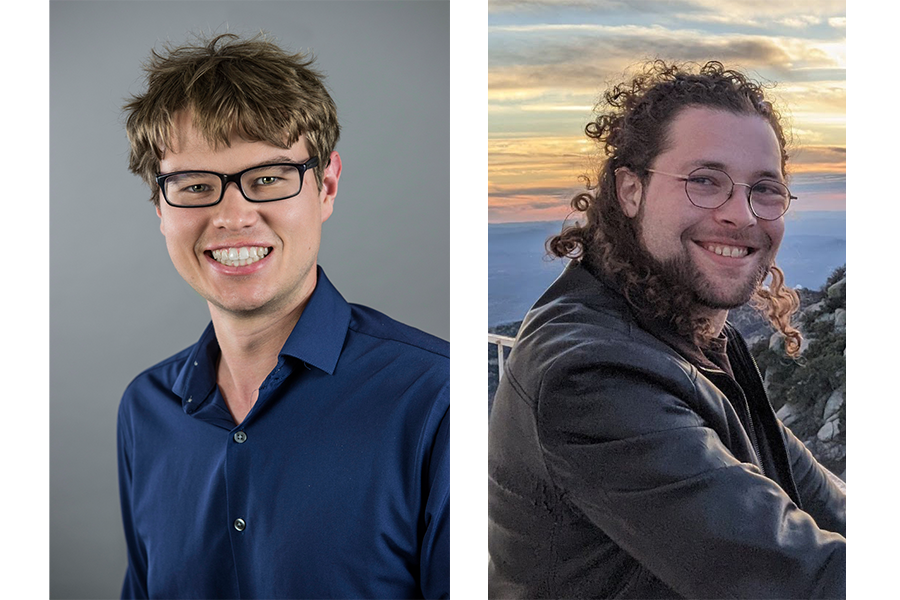
Coughlin and Criswell part of comprehensive UV light survey
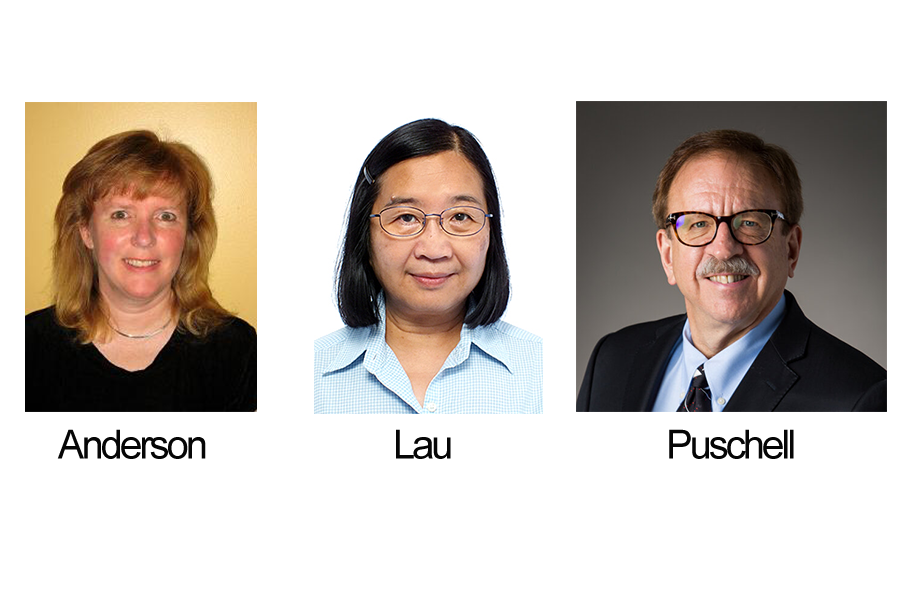
Three School Alumni elected to National Academy of Engineering
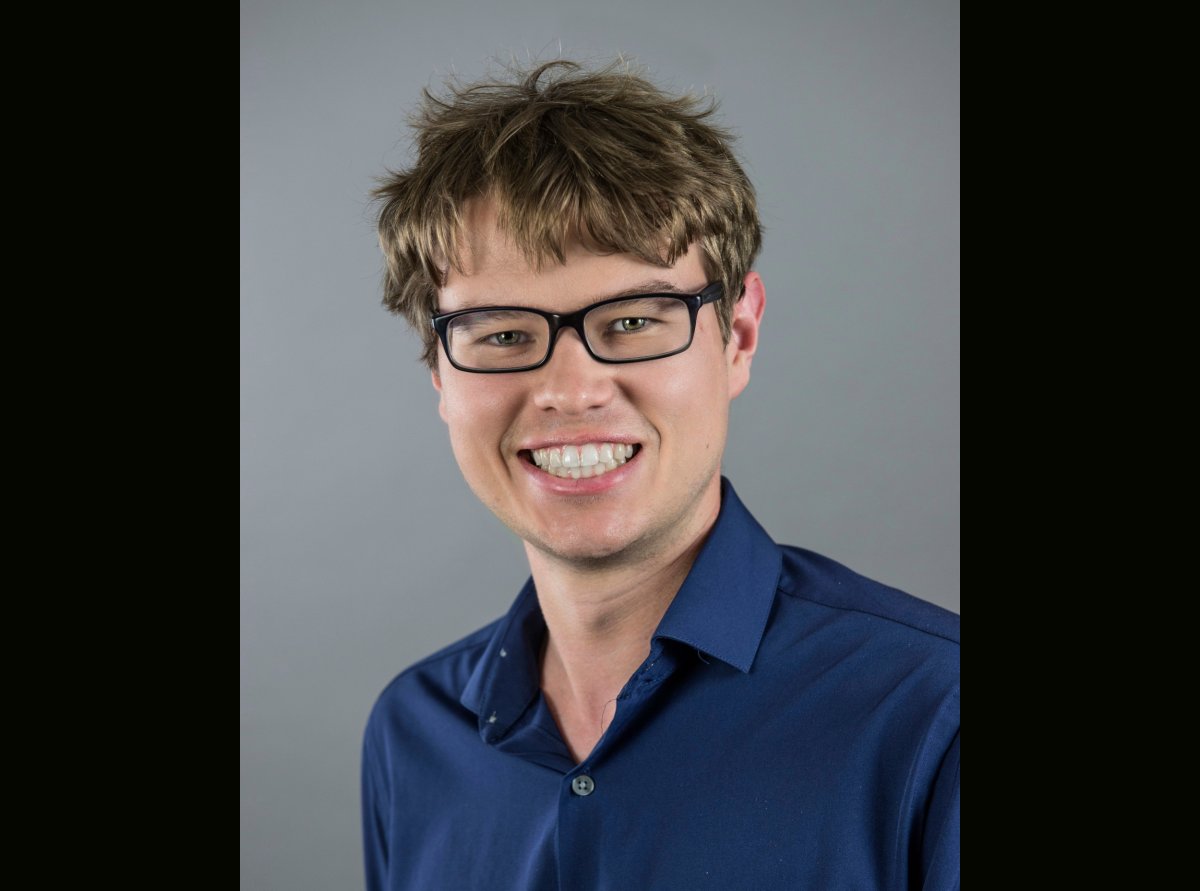
Coughlin receives McKnight Professorship

Humphreys Awarded Medal from Royal Astronomical Society
